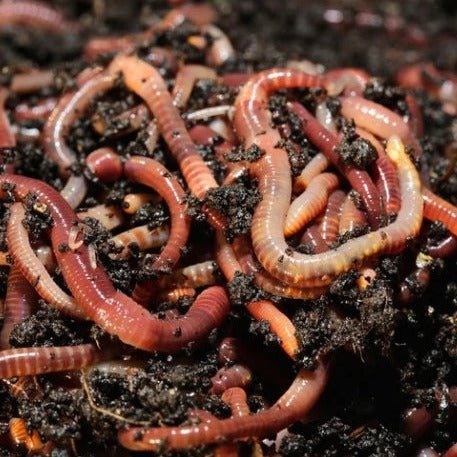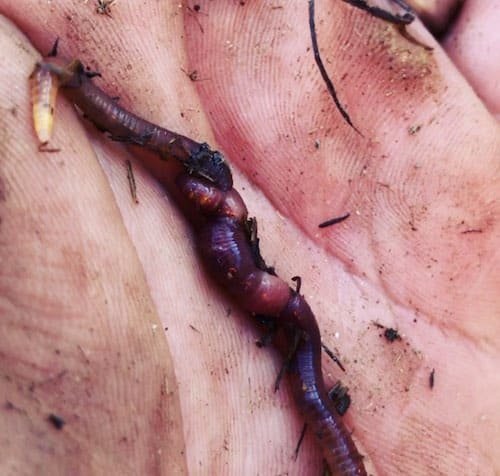Maximize Lawn Growth with Effective Products from Red Wiggler Express
Maximize Lawn Growth with Effective Products from Red Wiggler Express
Blog Article
Red Wigglers: The Unsung Heroes of Organic Waste Recycling
Red wigglers, or Eisenia fetida, serve as important representatives in the organic waste recycling procedure, transforming thrown out materials into beneficial vermicompost. As the world significantly looks for solutions to battle waste build-up and improve agricultural productivity, understanding the role of these worms becomes important.
What Are Red Wigglers?
The impressive resilience of red wigglers, medically referred to as Eisenia fetida, highlights their crucial role in natural waste recycling. These small, reddish-brown earthworms are normally discovered in decomposing raw material, such as compost piles and manure heaps. Lake Hickory Bait. Unlike other earthworm types, red wigglers prosper in nutrient-rich environments and are very reliable at breaking down organic products, making them important for vermicomposting

(Red Wiggler Express)Along with their function in waste reduction, red wigglers add to dirt health and wellness by improving soil structure and oygenation via their delving activities (Lake Hickory Bait). Their existence in composting systems not only boosts decay prices yet likewise advertises a sustainable approach to lose monitoring, showing their importance in ecological conservation initiatives
Benefits of Composting With Worms
Composting with worms, particularly red wigglers, provides many advantages that improve both waste management and soil wellness. These worms efficiently break down natural waste, converting it into nutrient-rich vermicompost that enriches dirt. This procedure increases disintegration, permitting a faster recycling of kitchen scraps and various other natural materials compared to standard composting approaches.
Additionally, the vermicompost created by red wigglers is including advantageous microbes, which help enhance soil structure, oygenation, and wetness retention. This enhances the overall wellness of plants, advertising vigorous development and raised yields in gardens and farming setups. The usage of worms in composting decreases the manufacturing of greenhouse gases, such as methane, adding to a more sustainable waste administration system.

How to Begin Vermicomposting
Developing a vermicomposting system is a straightforward process that can yield significant benefits for both waste monitoring and dirt enrichment. To begin, choose an ideal container, such as a plastic bin or wood box, with appropriate ventilation holes to make certain appropriate airflow. The measurements must preferably be around 2 feet by 3 feet, enabling enough area for the worms to flourish.
Following, prepare bedding material, which can include shredded paper, cardboard, or coconut coir. This bed linens should be moistened to produce a suitable environment for the worms. As soon as the bed linens remains in location, introduce red wigglers (Eisenia fetida) right into the bin, usually around one extra pound of worms for every square foot of surface area.
Adhering to the positioning of worms, include organic waste, such as vegetables and fruit scraps, coffee grounds, and smashed eggshells. Stay clear of including dairy, meat, or oils, as these can create odors and attract pests. Place the container in a shaded, temperature-controlled area to keep optimum conditions for worm task. With these steps, you will effectively launch a vermicomposting system that adds to lasting waste monitoring and enhances your soil.
Maintaining a Healthy And Balanced Worm Bin
(Lake Rhodhiss Bait)Maintaining a worm bin thriving needs routine attention and care to guarantee the wellness of the red wigglers and the efficiency of the composting process. Proper maintenance begins with checking the wetness click to find out more degrees; the container needs to perspire yet not saturated. A good general rule is to preserve a consistency comparable to a wrung-out sponge.
Oygenation is essential as well. Gently mixing the bed linens and food scraps every couple of weeks stops compaction and makes certain that all worms have accessibility to oxygen. Furthermore, it is essential to feed the worms suitably. A well balanced diet plan of fruit and veggie scraps, coffee grounds, and smashed eggshells must be supplied in moderation to prevent overfeeding, which can bring about smells and bugs.
If the container comes to be too warm or cool, the worms may come to be stressed out. By vigilantly handling these variables, one can keep a durable and productive worm container.
Effect on Sustainable Living
The successful maintenance of a worm bin not just benefits the health and wellness of red wigglers but likewise adds considerably to sustainable living methods. By reusing organic waste, such as kitchen area scraps and lawn debris, red wigglers assist divert considerable amounts of material from garbage dumps. This decrease in waste not only lowers greenhouse gas emissions yet likewise reduces the ecological concern associated with waste management.
In addition, the castings generated by red wigglers work as a nutrient-rich organic plant food, boosting dirt health and advertising plant development. This natural option to chemical plant foods sustains lasting agriculture and horticulture practices, decreasing dependence on artificial inputs that can damage ecosystems. Furthermore, worm composting promotes recognition of waste management, motivating people and neighborhoods to take on even more lasting routines.

Conclusion
In recap, red wigglers serve as vital factors to organic waste recycling with their efficient decomposition of organic materials. By incorporating vermicomposting into waste administration strategies, people and neighborhoods can considerably lower waste while advertising ecological sustainability.
Report this page